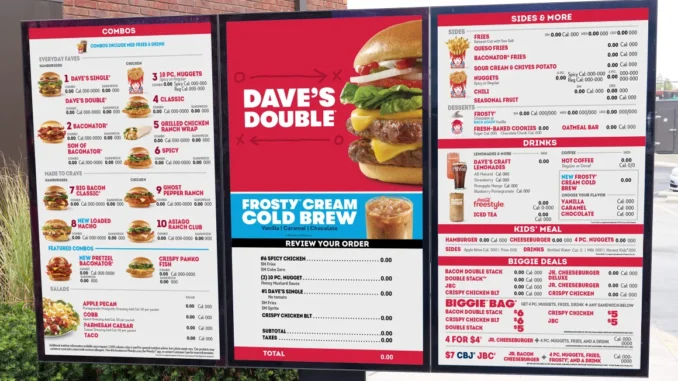
By Lea Mira, RTN staff writer - 2.27.2024
Wendy’s, the popular fast food chain with more than 6,500 restaurants currently in operation in the United States and 29 countries and U.S. territories worldwide, is set to introduce dynamic pricing, a practice akin to Uber’s surge pricing, into its menu. The company announced during a recent earnings call that it will begin testing this pricing model in 2025. The move is part of a $20 million investment in new digital menu boards across its US outlets, which will allow for price adjustments based on demand.
Wendy’s CEO, Kirk Tanner, explained that the new menus will enable the company to experiment with dynamic pricing and day-part offerings. The menus will also facilitate AI-enabled changes and suggestive selling. Tanner expects these digital menu boards to improve order accuracy, enhance crew experience, and drive sales growth through upselling and consistent merchandising execution.
The concept of dynamic pricing is not new, with companies like Ticketmaster and Uber already using sophisticated algorithms to adjust prices based on demand. Even movie theater chains, including AMC, Regal, and Cinemark, have recently started using surge pricing. However, its application in the restaurant industry has been limited due to the labor required to change menus. Digital menus and apps, however, can easily update prices, making it simpler for fast food chains to implement dynamic pricing.
Wendy’s is not the only fast food chain exploring dynamic pricing. McDonald’s has also experimented with this pricing model and new order-suggestion capabilities at some of its upgraded drive-thrus and on its app. However, the inconsistent prices at its franchises have sparked controversy over the affordability of its food.
Surge pricing could be a turning point for the restaurant industry. If Wendy’s model proves successful, other chains may follow suit. However, surge pricing also carries with it the potential for backlash from consumers if prices are perceived to be raised during busy times.
Wendy’s has a history of technological innovation. Last August, for example, the company announced the opening of its first Global Next Gen restaurants and finalized a new high-capacity kitchen design for high customer demand. These digital-first designs aim to enhance customer, crew, and franchisee experiences and accelerate growth across Wendy’s global restaurant footprint.
The first Wendy’s Global Next Gen restaurants, featuring a modern design, optimized layout, and next-generation technology, opened in Kansas and Oklahoma, with over 200 more planned to open this year. The new design includes a dual-sided kitchen layout and increased equipment capacity for greater order throughput.
Abigail Pringle, Wendy’s President, International & Chief Development Officer, stated that the Global Next Gen design increases the capacity for digital orders by 400 times, accelerating the company’s digital growth. The successful openings of these restaurants within a year of unveiling the design demonstrate Wendy’s commitment to digital expansion.

